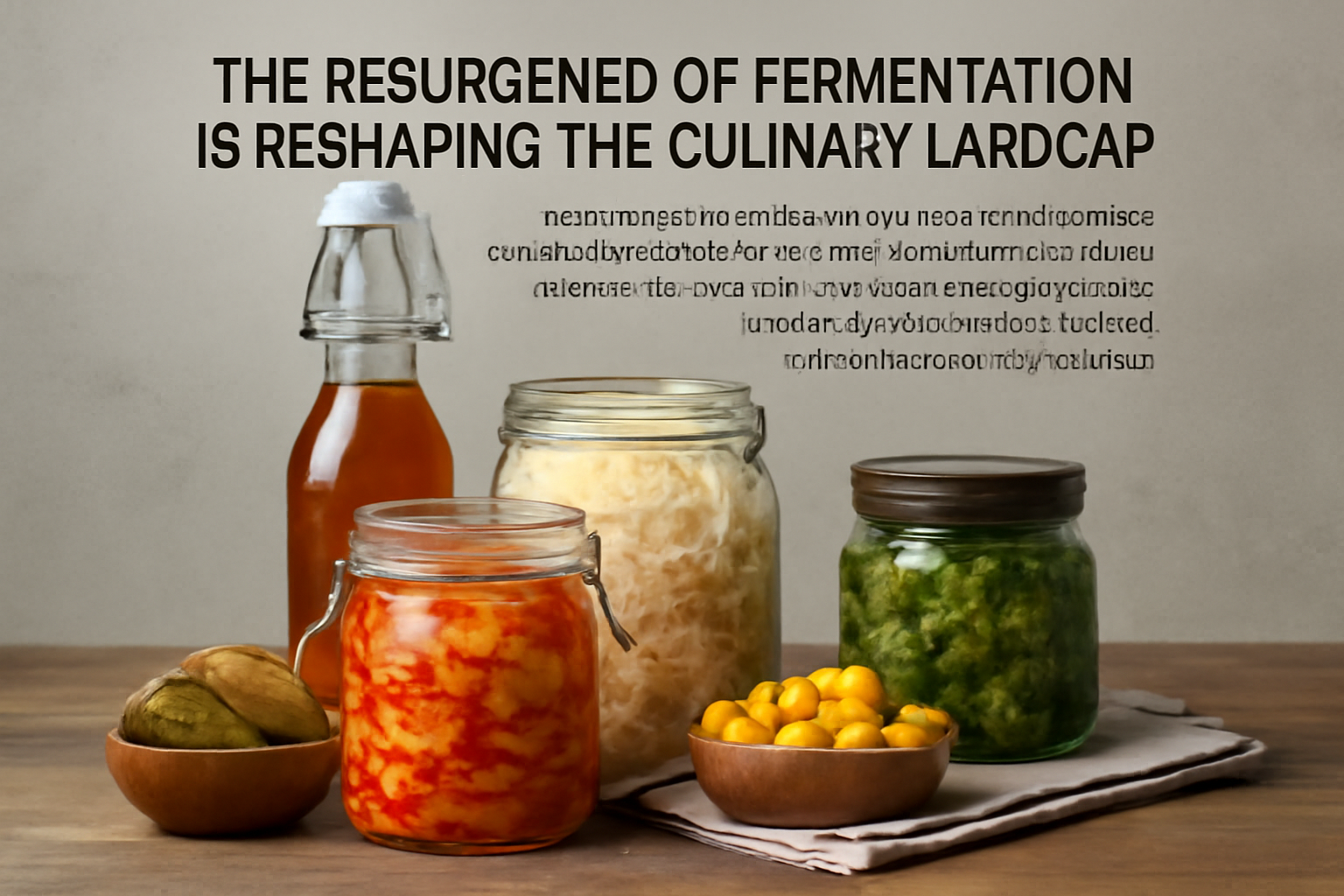Location
Mount Vernon, WA 98274
Location
Mount Vernon, WA 98274

The resurgence of fermentation is reshaping the culinary landscape, driven by a growing awareness of gut health and sustainability. From kimchi to kombucha, these probiotic-rich foods are not only enhancing flavor but also offering a deeper connection to traditional food practices.
As we continue to explore new culinary horizons, one trend is gaining remarkable momentum: fermentation. This ancient method of food preservation is being rediscovered by chefs and home cooks alike, not just for its ability to create complex flavors, but also for its significant health benefits.
Fermented foods are rich in probiotics, beneficial bacteria that play a crucial role in gut health. Recent studies indicate that a healthy gut microbiome is linked to improved digestion, enhanced immunity, and even better mental health. This has sparked a surge in demand for products like kefir, kimchi, sauerkraut, and kombucha, all of which offer a tasty way to incorporate probiotics into our diets.
Chefs are embracing fermentation as a way to elevate their dishes, bringing unique flavors to the forefront. For instance, a trendy restaurant might feature a dish of miso-glazed eggplant, where the miso not only adds umami but also showcases the depth of flavor that fermentation can provide. Similarly, craft breweries are experimenting with wild yeasts to create sour beers that boast complex profiles, appealing to adventurous palates.
Beyond health benefits and flavor, fermentation aligns with sustainability practices. As chefs and consumers alike look for ways to reduce food waste, fermenting surplus produce offers a solution. Items that might otherwise be discarded, such as slightly wilted vegetables or overripe fruits, can be transformed into delicious pickles or preserves, extending their life and adding value.
Moreover, fermentation fosters a connection to cultural heritage. Many traditional fermented foods are tied to specific regions and communities, reflecting local ingredients and culinary practices. This revival encourages a greater appreciation for food origins and the stories behind them. For example, the increasing popularity of kimchi in Western cuisine is not just about the dish itself, but also about the rich history and cultural significance it holds in Korean traditions.
As we move forward, expect to see even more innovative uses of fermentation in mainstream cooking. Culinary schools are incorporating fermentation techniques into their curricula, and home fermentation kits are becoming popular among DIY enthusiasts. Whether through workshops or online tutorials, the knowledge of fermentation is being shared, empowering individuals to explore this age-old technique in their kitchens.
In conclusion, the fermentation frenzy is more than a passing trend; it represents a shift towards healthier, sustainable eating practices deeply rooted in tradition. As consumers become more conscious of what they eat, the demand for probiotic-rich foods will likely continue to grow, shaping the culinary landscape for years to come.